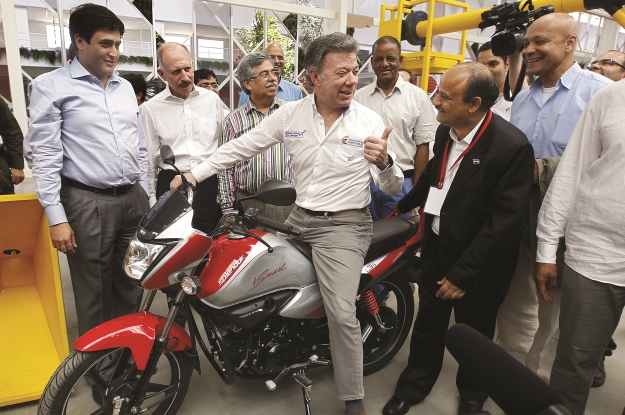Until recently, China’s $264 billion trade with Latin America has dominated the attention of the region’s policymakers, analysts and media. Now, as the Asian giant’s economy slows, opportunity is opening up for a new player on the region’s doorstep: India.
The Indian subcontinent, whose one-billion-plus population is expected to surge past China’s by 2025, has so far been a comparatively quiet presence in the Americas; its $50 billion trade with Latin America and the Caribbean (LAC) amounts to less than a quarter of its northern neighbor’s. But in the past decade, Indian businesses have gradually established a presence in Latin America, betting on the region as a source for long-term gain.
Of the Indian companies looking anew to Latin America, the biggest is the Aditya Birla Group, which currently generates $2 billion in revenue in LAC from activities ranging from aluminium production to the manufacture of viscose yarn. Anurag Srivastava, who leads the conglomerate’s Latin America operations, said the company is working to expand throughout the region, citing currency devaluations and lower asset pricing in several LAC countries as advantages. “Some companies are deterred by issues of distance, language and the relatively high costs of doing business in Latin America,” Srivastava said. “We see Latin America as a strategic market and are taking a long-term approach.”
Others too have entered the fray: UPL Limited, an Indian agribusiness company, receives 26 percent of its total revenue from LAC, with Brazil alone representing a bigger market for UPL than the Middle East, Africa and Asia (excluding India) combined. The Mumbai-based Glenmark Pharmaceuticals made Buenos Aires, Argentina, the hub of its oncology business, while Brazil and Mexico account for 22.8 percent and 20.5 percent, respectively, of investments in international subsidiaries for another Indian pharma company, Torrent Pharmaceuticals. More recently, in September 2015, New Delhi’s Hero MotoCorp opened its first international manufacturing plant in Colombia. President Juan Manuel Santos personally inaugurated the plant, which is expected to produce 150,000 motorcycles per year.
India’s engagement with Latin America is particularly evident in the energy sector. According to the Inter-American Development Bank, India accounted for 50.1 percent of LAC’s energy exports to Asia in 2013, compared with 44.8 percent for China. Moreover, LAC’s share of India’s total oil imports increased from 4.5 percent in 2003 to 20 percent in 2014, whereas LAC accounted for just 10 percent of China’s total oil imports in 2014.
However, perhaps most indicative of India’s growing stake in Latin America is the country’s diverse range of investments in the region. Only 18 percent of India’s investments in LAC are focused on raw material extraction, compared to 57 percent for China — of particular importance as the drop in global commodity prices makes trade in natural resources less valuable. And while China’s total investments in LAC account for a whopping $50 billion, eclipsing India’s $20 billion, the two countries were evenly matched in the total percentage of greenfield investments in the region from Asian countries between 2003 and 2011, at 14 percent each.
Of course, not all Indian companies succeed in LAC. Jindal Steel and Power, which in 2007 announced to much fanfare a $2.1 billion investment in Bolivia’s El Mutún mine, is now fighting a legal battle after canceling the contract and exiting the country. Some others looking for short-term gains have divested their stake or closed shop due primarily to a lack of preparation and a one-size-fits-all approach.
It is not difficult to envision a more robust commercial engagement between India and Latin America. Both have large and growing middle classes — macro factors that Douglas Stippoldt, an international trade specialist at HSBC, said will generate “increased opportunity for trade in both directions.” Furthermore, both provide each other an opportunity to lessen dependence on traditional partners and diversify into relatively new markets. LAC companies can take advantage of the investment incentives in sectors Indians specialize in, specifically in renewable energy, mining and manufacturing. Indian investment in Latin America also promises greater employment prospects in addition to capital flows. For example, Indian IT companies, both small and large, currently employ some 25,000 people in Latin America, nearly all locals. With a little bit of initiative and enterprise, that number could multiply over the next decade.
—
Seshasayee specializes in Latin American studies and India-Latin America relations and currently works with the Confederation of Indian Industry. He can be reached at harisesh@alumni.stanford.edu





